Fire in the Mill
In 1900, the Dre-fach Felindre area was home to 52 mills in full production. During World War One the Welsh woollen industry was employed in the war effort producing blankets and uniforms for the armed forces. Welsh grey homespun known as Brethyn Llwyd uniforms were commissioned by the War Office to give a nationalistic distinction to the new recruits of the new Welsh Army Corps formed during the war.
After the war 12 million yards of surplus flannel was sold on the open market by the government at ridiculously low prices, forcing woollen manufactures to also cut their prices. Flannel shirts, for example, sold at 52s 6d a dozen in 1916; by 1923 the price had dropped to 38 shillings. The woollen manufactures of west Wales failed to meet the changing conditions after the war, with some still producing inferior Angola as they had done in war time. Most of the manufacturers still concentrated on the production of flannel for shirts, vests and drovers, but demand for underwear flannel fell rapidly with the introduction of knitted underwear produced by the hosiery manufactures of the East Midlands, Scotland and the north of England.
On 11 July 1919 Cambrian Mills caught fire and the three-storey mill south building was destroyed.

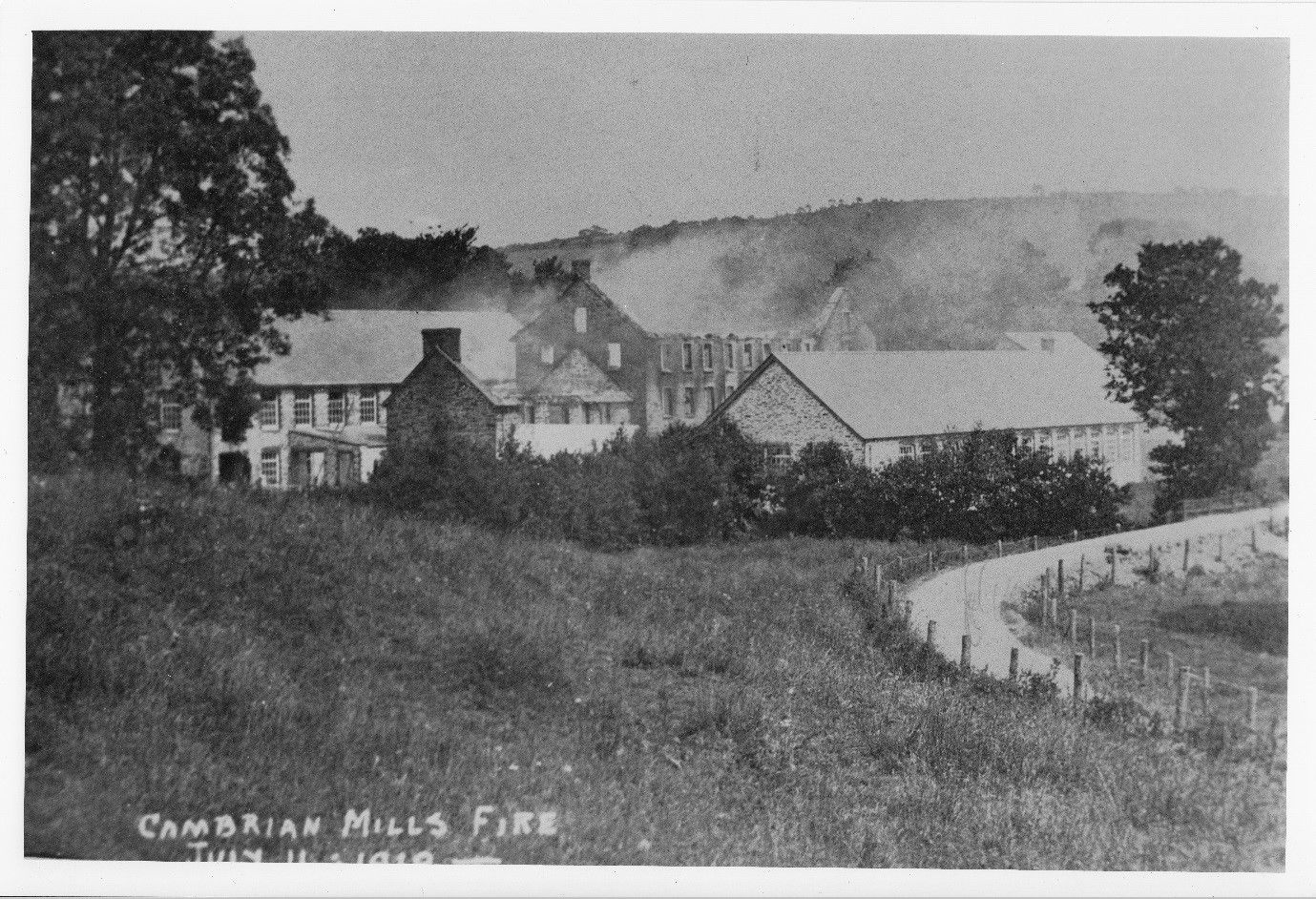
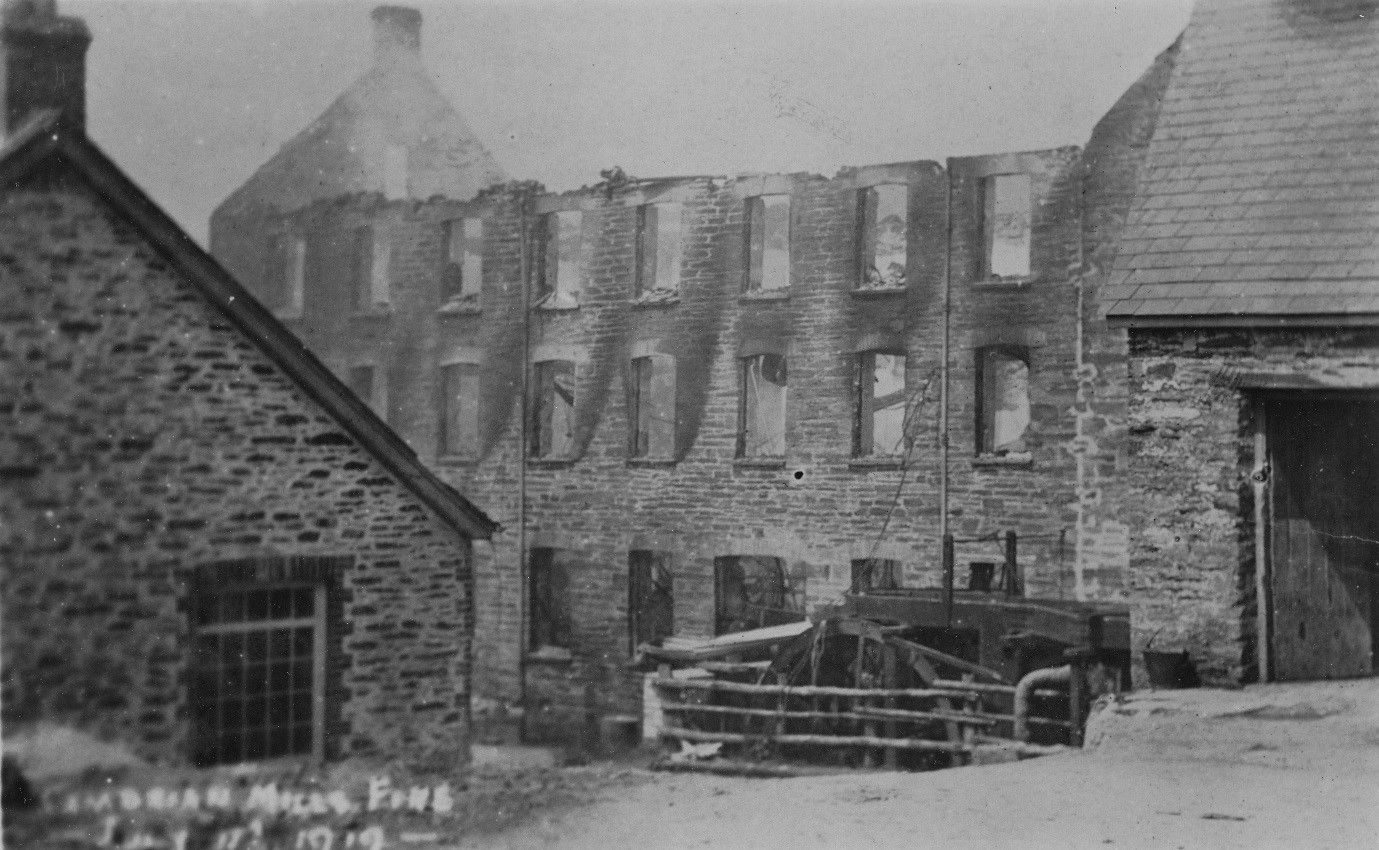
At the time of the fire the Mill manager, John Davies, was on holiday in Llanwrtyd Wells with his family. His daughter Nesta Morgan remembers her father receiving a telegram at the hotel, but he was unable to read it as it was in English. A passing gentleman read the telegram telling him that part of the mill had been destroyed by fire. Her father was very upset and contacted David Lewis immediately to ask if he should come home; David Lewis responded that he should not but rather return the next day as planned.
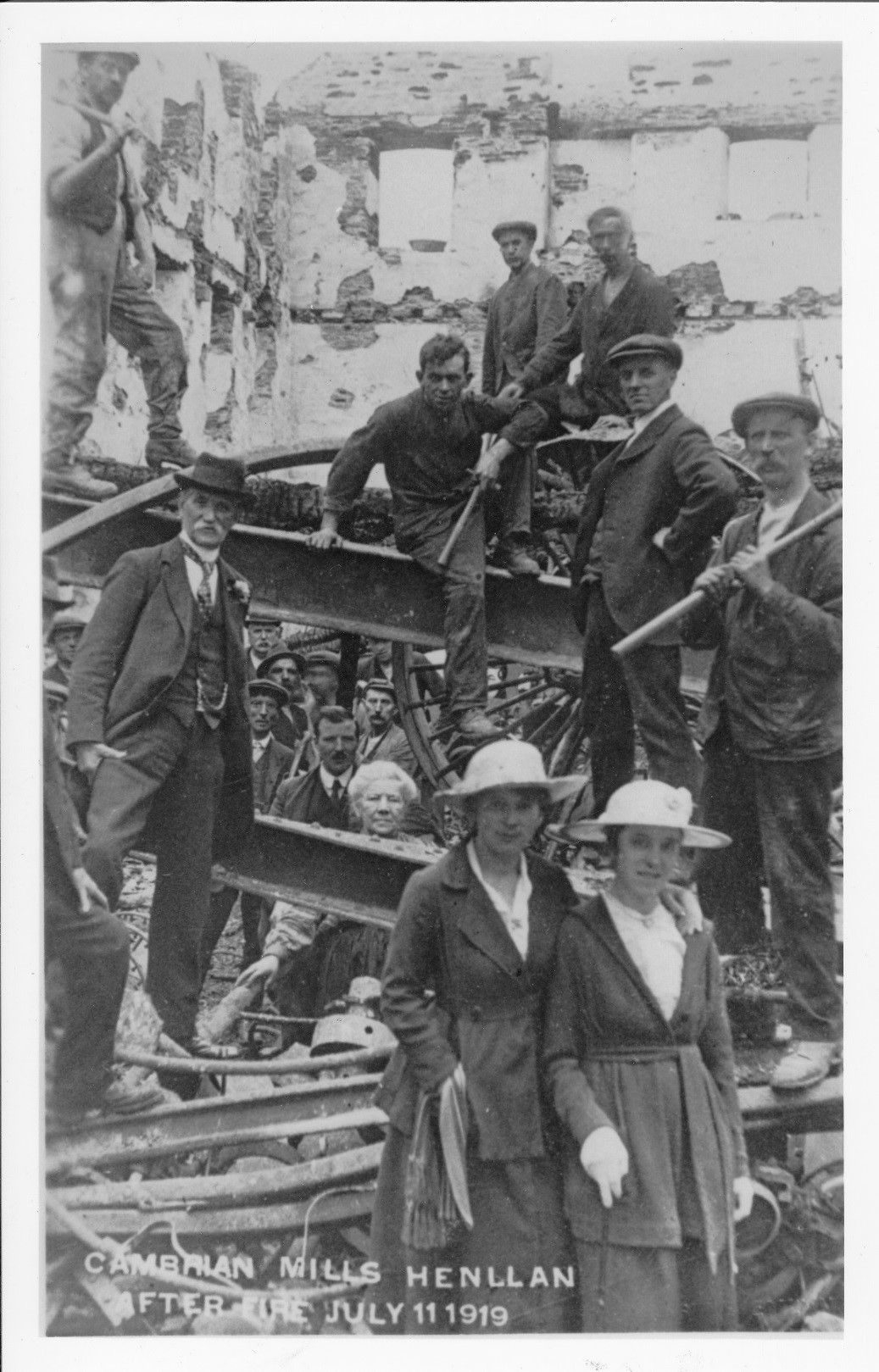
David Lewis on the left of the photograph with the moustache and hat in the remains of Cambrian Mills
David Lewis used the insurance money to rebuild the mill only two storeys high, but considerably longer in length.
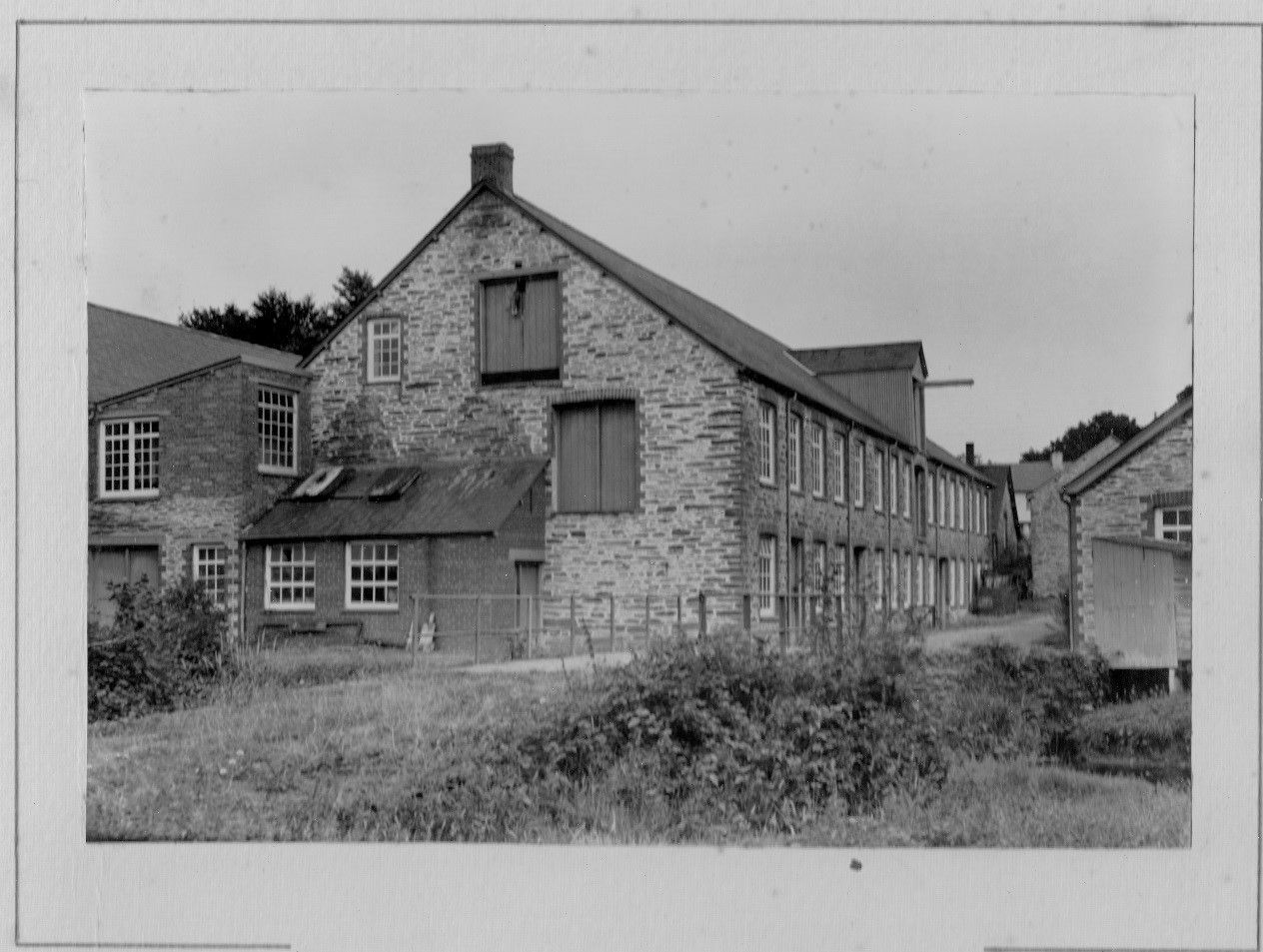
Rebuilt Cambrian Mills
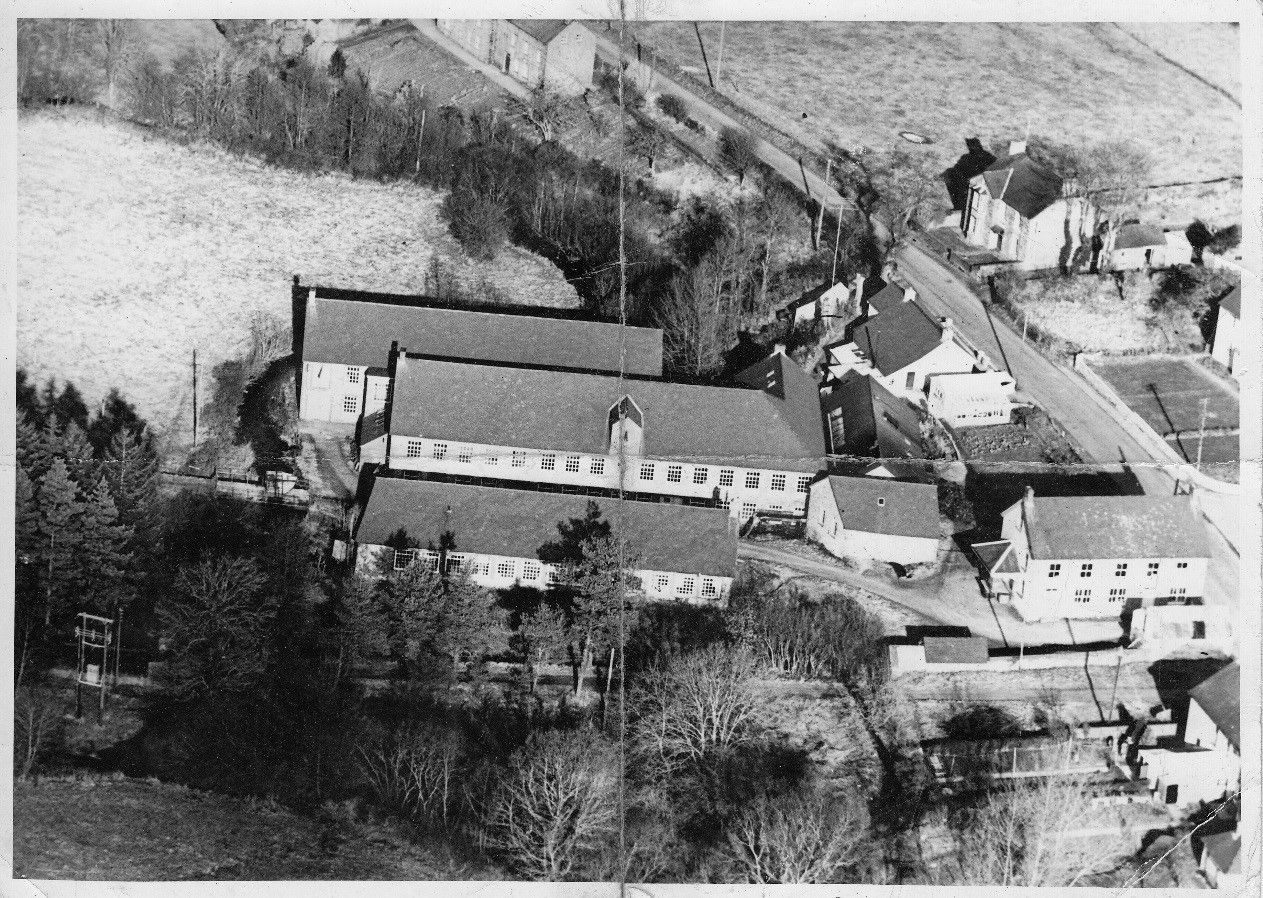
Rebuilt Cambrian Mills
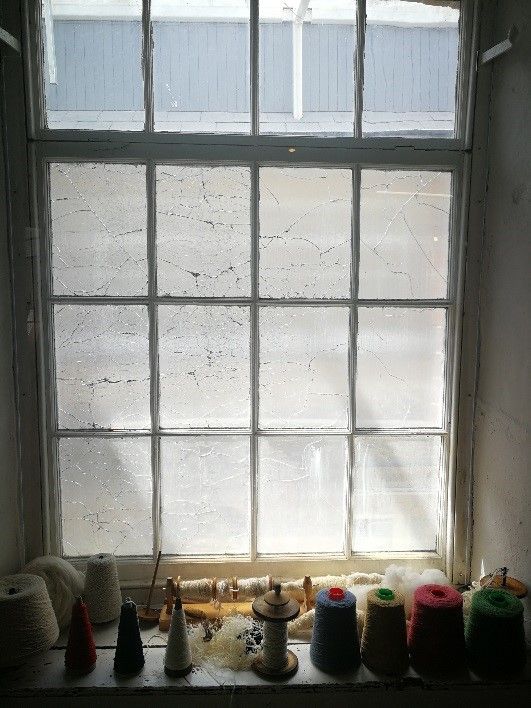
Cracked glass in Mill North from the heat of the fire in Mill South that is still visible at the National Wool Museum
The fire in Cambrian Mills was the first of 7 suspicious fires in mills in Dre-fach and the surrounding area, including mills at Frondeg and Meiros owned by David Lewis’s brothers Daniel and John Lewis respectively. Not all mills were rebuilt after the fire, however insurance companies were becoming suspicious that the fires were not accidents and insisted that the mills were rebuilt. Meiros was rebuilt in red bricks with the insurance monies paid in instalments as work was carried out.
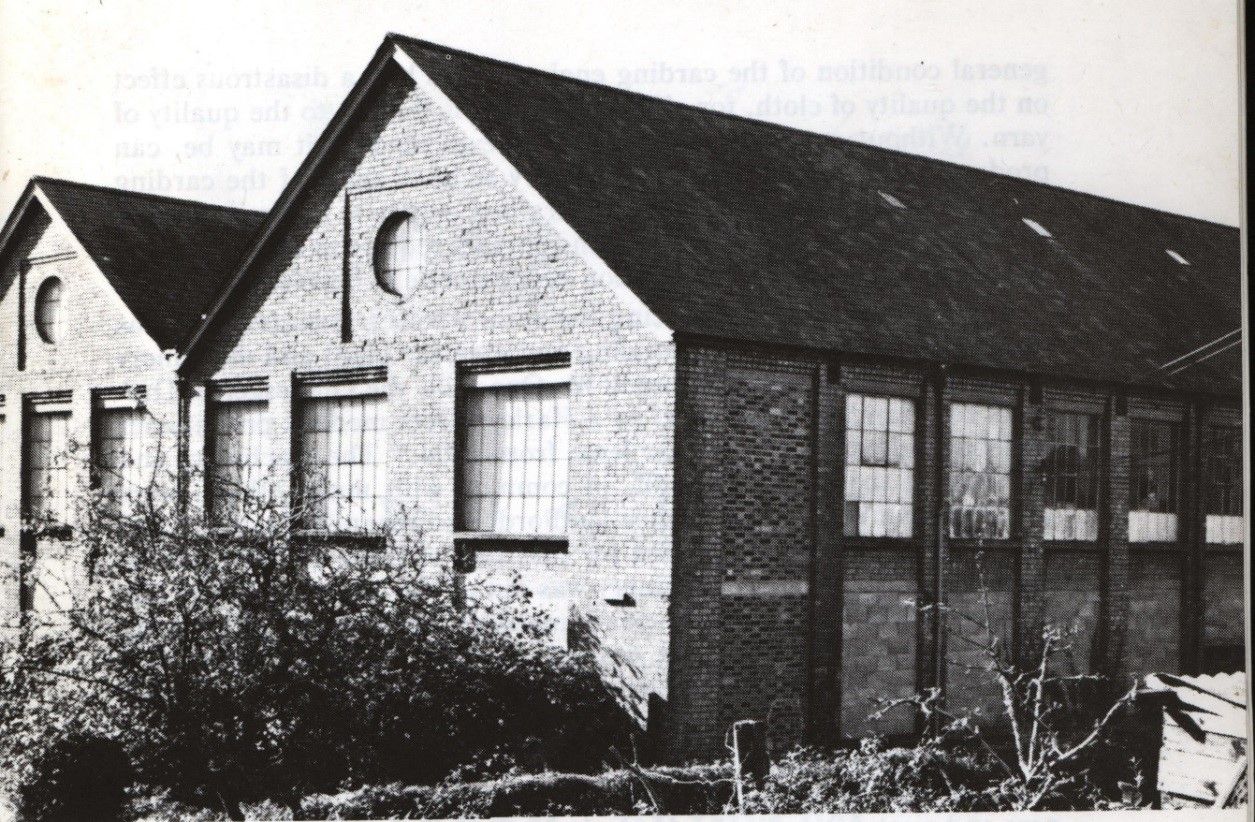
Rebuilt Meiros Mill
Another 21 factories closed in Dre-fach Felindre and the surrounding area in the post-war period.
‘[Mill owners who made vast profits from war contracts] made no attempt to set their mills on a sound financial basis, content to bank the money or buy seaside cottages’
Geraint Jenkins 1967, the Welsh Woollen Industry, p. 278
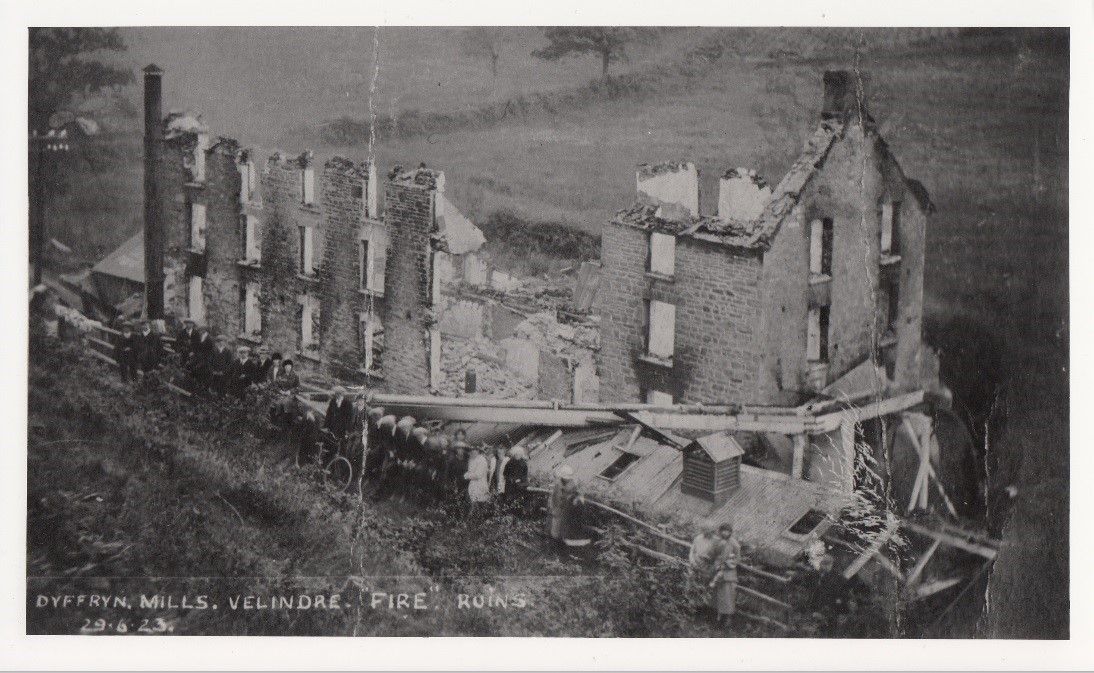
Dyffryn Mill 29/6/1923
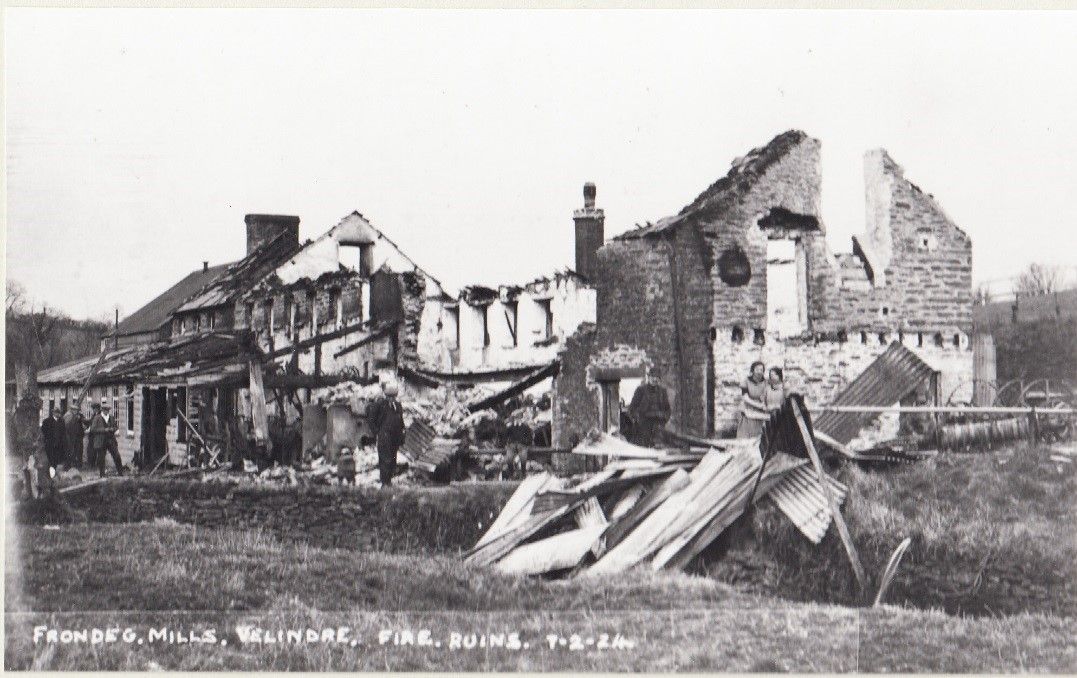
Frondeg Mill 7/2/1924
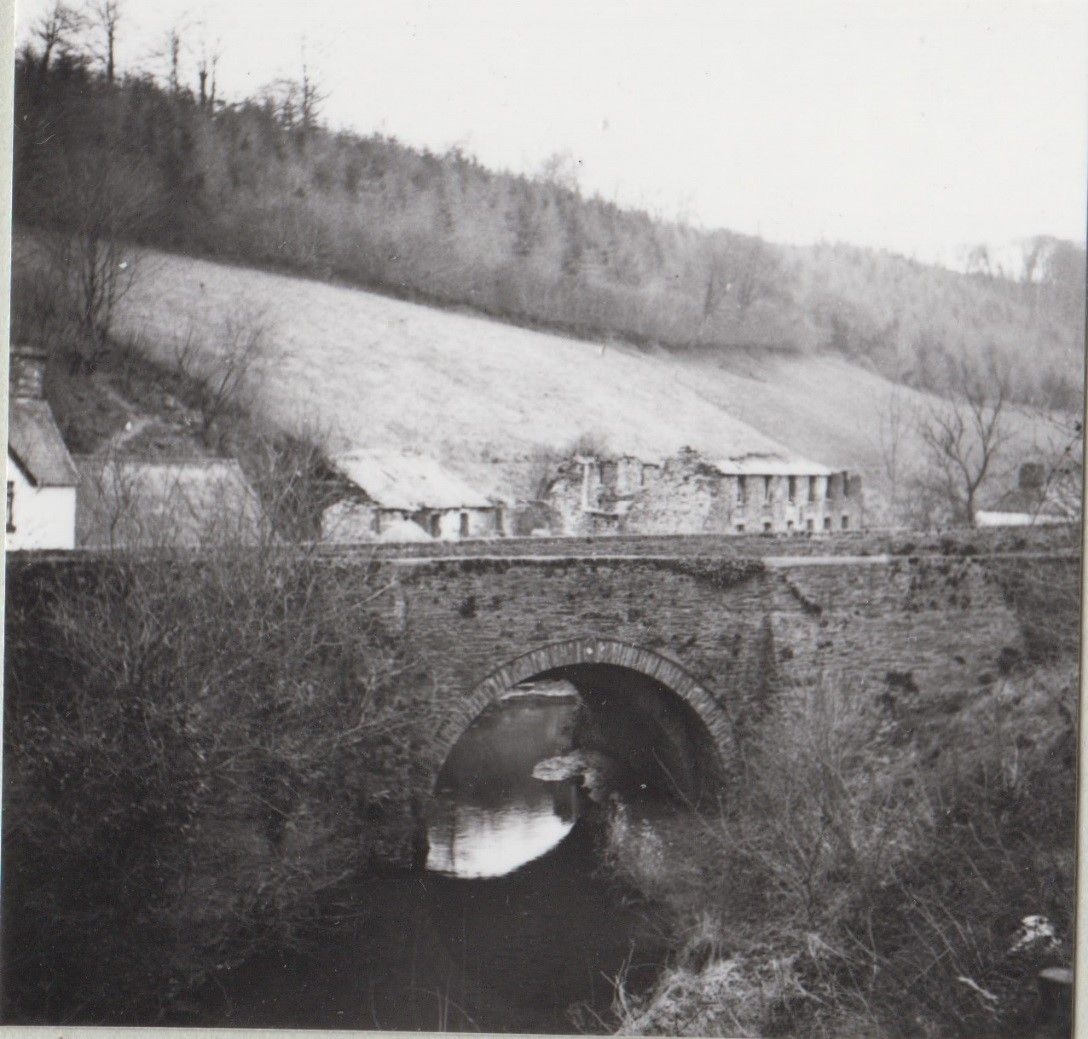
Aberbanc Mill 1926
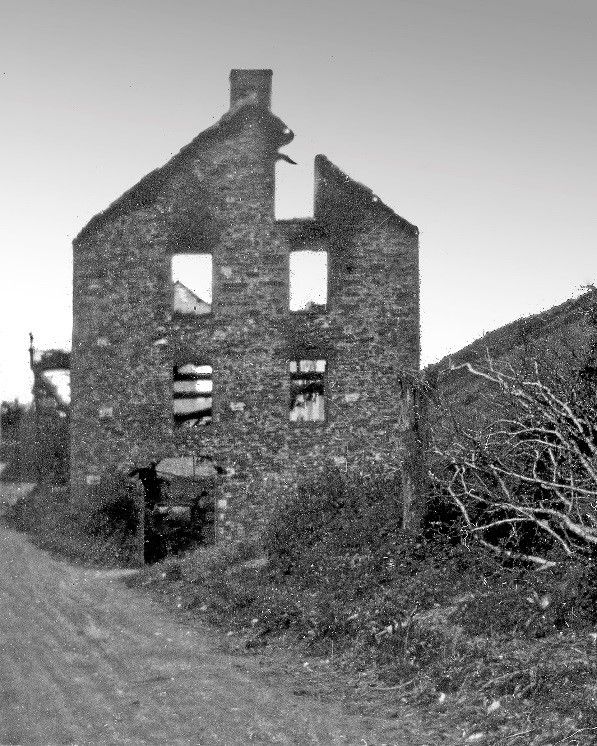
Ogof Mill 1927
Other Mills destroyed by fire:
- Meiros in the 1920s
- Llwynhelyg Mill 1927
- Llainffald Mill 1920s
Mills closed in Drefach Felindre and the surrounding area:
- Babel 1925
- Cilwendeg 1928
- Cwm-ty-mawr 1920
- Glyn Mills 1930
- Llwynbedw 1920
- Pant-glas 1922
- Spring Gardens 1925
- Bach-y-gwyddil 1923
- Cwm-gilfach 1923
- Drefach 1923
- Green Meadow 1928
- Nant-y-bargoed 1925
- Penwalk 1928
- Ty Main 1923
- Cawdor 1924
- Cwm-pen-graig 1922
- Felin-fach 1924
- Henfryn 1920
- Pandy 1920
- Siop Pensarn 1921
- Tower Hill 1925
Comments - (4)
Any references to websites concerning this topic would be fantastic.
regards
Christine
i am looking for information on The Cambrian Wollen Mill, LLanwrtyd Wells, Powys during the period of 1880 - 1916, apparently it was owned by my ancestors Enoch, Rebecca and Hartley Roberts, i cant seem to find anything online and wondered if you had any information.
kind regards
michelle
Hi Steve,
Thanks for getting in touch with us. I have responded directly to the email address provided. Just so that you're aware, a number of our staff members are currently on furlough, so I'm afraid it's taking a little longer than usual for us to respond with the requested information or advice.
Kind regards,
Nia
(Digital team)
Many thanks
Steve.